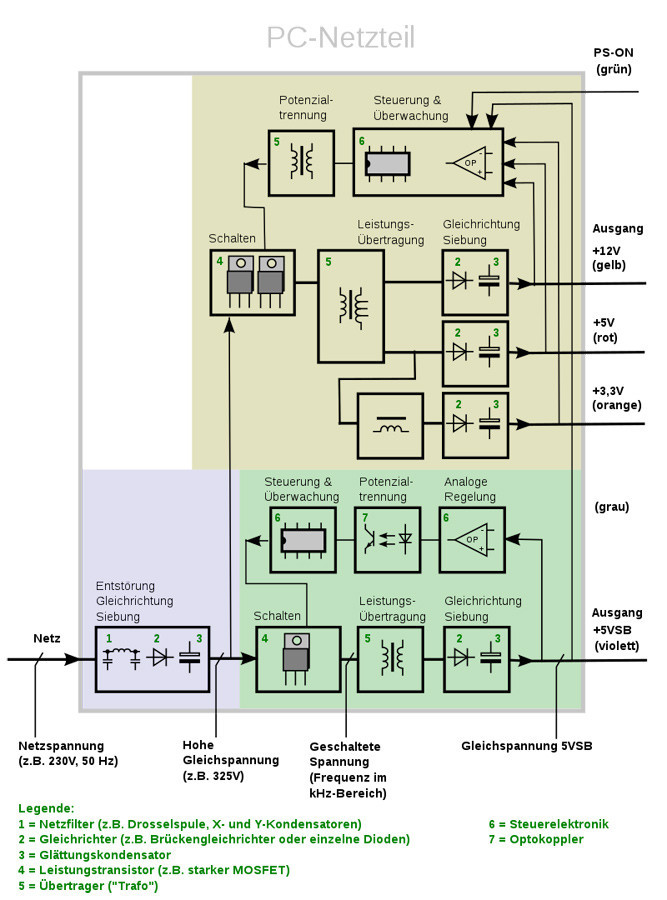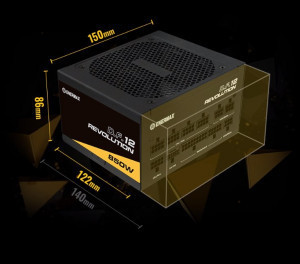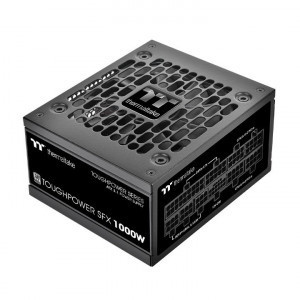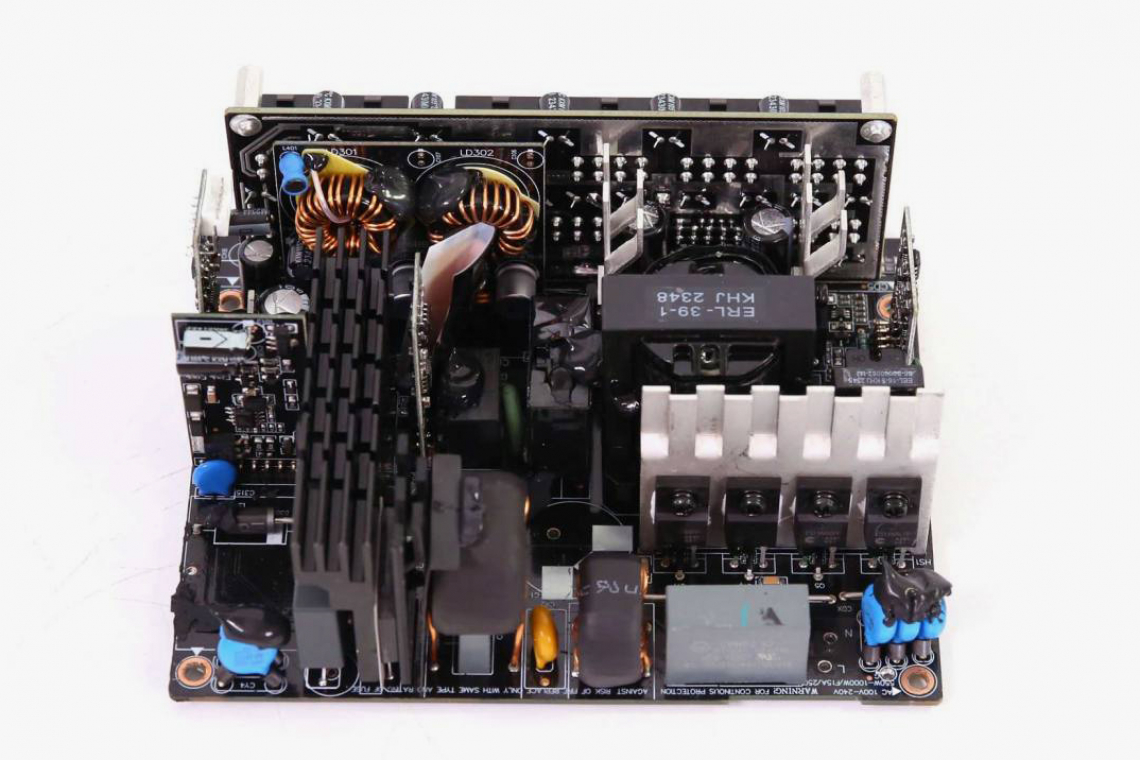From June 18-20, 2024, the Fraunhofer Institute for Reliability and Microintegration (IZM) in Berlin will once again host the international conference 'Electronics Goes Green'. The author takes this as an opportunity to take a brief look at the different roles that environmental aspects and green design play in the public relations work of electronics manufacturers.
Advances in semiconductor technology, especially in processors, have led to rapid progress in the operating speed of PCs - and this continues to grow. This has brought with it enormous growth in the possibilities of gaming and computer-aided design (CAD), for example, thanks to increasingly powerful GPUs (Graphic Processor Units). An important prerequisite for this was that the electrical and structural design of the power supply for these devices kept pace with the development speed of PC technology. Because GPUs also play a central role in the field of artificial intelligence (AI) and deep learning, the introduction of the latter leads to even higher demands on the stability and performance of the power supply. That is one side of the coin. The other is that it is becoming increasingly important to prioritize environmental aspects and promote environmentally friendly processes and products throughout the industry's value chain.
Basic remarks
In the case of computers, the power supply is essentially ensured by autonomous power supply modules, which are mass-produced by OEMs and are available as more or less standardized commercial goods. In the case of PCs, they are built into the computer housing; laptops and some miniature PCs have external power supply units with similar characteristics. The AC mains current is transformed into the lower DC voltages required in the computer, rectified, filtered and regulated. It is designed as a switching power supply.
PC power supplies are sealed. They are subject to various standards, such as the CE mark and the associated DIN EN 60950-1 (VDE 0805-1):2014-08 and the EN 60950, the European version of IEC 950, and EN 55022 contained therein.
The built-in power supply units usually also contain fans which, in addition to self-cooling, are used in whole or in part to cool the components installed in the PC housing. There are also power supply units with 'passive cooling' (without a fan) or, as a variation, semi-passive power supply units, which have a fan that is only switched on when required. Power supply manufacturers are responding to the increasingly stringent demands on power supply modules by constantly developing them further in line with the growing electrical and design requirements of PC manufacturers, but also in compliance with increasing environmental legislation (green electronics). Examples of this are given below in this article. The basic parameters of a PC power supply include the rated power and the maximum load capacity of the voltage rails leading to the individual consumers in the computer with different DC voltages. General quality features include a low fan noise level and high efficiency, as well as a failure-free and fluctuation-free power supply, even with asymmetrical loads on the various voltage outputs. Additional features include the fan running on after switching off to dissipate residual heat, detachable cables, temperature-controlled fans or a specific design. The voltage stability depends on the component qualities and can only be determined through extensive laboratory tests. The 80PLUS certification designates the energy efficiency of a power supply unit, with the levels from Standard to Titanium indicating the degree of efficiency. Warranty periods of up to ten years are given for functional reliability. Some manufacturers of power supply modules indicate in the description of their products that the high electrical quality of their modules has been achieved through special design measures, for example by selecting higher-quality components such as electrolytic capacitors or semiconductors or special fan qualities and arrangements. Figure 2 shows the electrical diagram of a typical power supply unit. It shows that power supply manufacturers have numerous opportunities to influence the quality of their products through circuit design and component selection, including from a green design perspective.
 Fig. 2: Electrical diagram of a typical power supply unit
Fig. 2: Electrical diagram of a typical power supply unit
High degree of standardization with freedom
In order to make the respective power supply suitable for as many computers as possible, basic requirements for power supply modules were defined in the 1980s in so-called 'formats', of which there are now a whole series according to the different requirements for the power supply modules. These were identified by different letter sequences (AT, ATX, BTX etc.). The formats describe the mechanical and electrical properties of the various module types, which must be adhered to so that the 'black box' power supply unit can be installed in the PC without problems and harmonize with the PC's electrical circuitry. Further information, for example on the assignment of the connection contacts of the modules, can be found in [2].
The specifications of the formats include basic application parameters of the modules:
- External dimensions
- Mounting options such as screw positions
- Air flow for cooling the entire computer
- Connector dimensions
- Pin assignments
- Minimum number of plugs
- Cable lengths
- Output voltages
- Current per output voltage
- Efficiency levels
Although the dimensions and mounting options are specified in the housing standards, they only define the width and height of the module, but not necessarily its depth, nor the housing material. This results in design variation options for the power supply manufacturers, e.g. to reduce the volume and weight of both the power supply and the PC, combined with cost reduction through material economy. By far the greatest design freedom of power supply modules for the manufacturers, however, is in the 'electrical inner workings' of the black box, as shown in Figure 2.
Starting with the AT (Advanced Technology) power supply units, whose specification was introduced by IBM in 1984, other specifications such as ATX, BTX and SFX were added in the following years:
- ATX stands for Advanced Technology Extended and has existed since 1995. It is a standardization for computer housings, power supplies, motherboards and plug-in cards. Despite attempts to establish the BTX format as the standard, the ATX format is still the dominant format for PCs and desk-top computers. It has the basic dimensions (W x H) 305 × 244 mm
- BTX stands for Balanced Technology Extended, an elaborate format which the thermally very demanding Pentium processor required due to its special air flow regime inside the housing in order to be sufficiently cooled
- SFX was introduced by Intel in 1997 in order to be able to build even smaller computers. The dimensions are (W × H × D) 125× 63.5 × 100mm.
For flat housings (SFF = Small Form Factor) - mainly found in desktops - the TFX standard (Thin Format Factor), for example, was developed by Intel in 2002. The dimensions are (W × H × D) 85× 65 × 175mm. When describing their products, power supply manufacturers always refer to which of these formats (or variations of them, so-called 'sub-formats') the development of the module is based on. For the ATX format, for example, there are the following sub-formats:
- Micro-ATX (µATX, mATX, M-ATX): 244 × 244 mm
- Mini-ATX: 284 × 208 mm
- E-ATX (Extended ATX): 305 × 330 mm
- XL-ATX: 345 × 262 mm.
Smaller, quieter, more powerful, even more reliable
These four terms can be used to describe the trend that, as is often the case in the electronics industry, is more or less finding its way into many manufacturers of power supply modules for the computer and gaming industry. It is about the continuous improvement of products from a design, electrical and usage perspective. This process can also be classified as part of the 'Electronics Goes Green' movement, although the latter is understood more broadly, characterized by the 4Rs: Reduce, Reuse, Recycle, Repair. The following examples show that although many manufacturers are constantly working on improving their products, this mainly relates to improving the electrical parameters of the power supply modules and noise reduction (fan noise) and only to a lesser extent to optimizing the design parameters, for example in the direction of material savings.
The examples discussed below also demonstrate the different approaches taken by module manufacturers in their corporate communications and public relations work with regard to their environmental policy: some disclose their efforts to bring more environmentally friendly products onto the market in press releases and on their websites, while others do so only partially or not at all - although it is clear from the progress made in the development of their new products that they are striving for greater electrical efficiency or reliability, for example.
Revolution D.F. 12, the world's smallest ATX 3.1 power supply from Enermax
 Fig. 3a: Basic information on Revolution D.F. 12 from EnermaxEnermaxTechnology Corporation, a manufacturer of PC power supplies, cases, fans, keyboards and other peripherals founded in Taiwan in 1990, announced its new product with this title in March 2024(Fig. 3b). The way it is worded already indicates that there is a fierce struggle for leadership positions in the power supply market. Enermax sees itself as the global industry leader. However, the company also produces high-performance computer hardware and complex cooling solutions. Its latest power supply series on the market, the Revolution D.F. 12, is proclaimed to be the world's smallest ATX 3.1 power supply with a depth of just 122 mm. The design maximizes airflow space in PC cases while delivering robust performance to ATX 3.1 specifications, including up to 235% power excursion. Equipped with a 600W 12V 2x6 cable, the Revolution D.F. 12 ensures high performance for high-end graphics cards and cutting-edge AI computing. The 850W power supply also fits seamlessly into Micro-ATX cases, providing ample space for efficient cable management [2].
Fig. 3a: Basic information on Revolution D.F. 12 from EnermaxEnermaxTechnology Corporation, a manufacturer of PC power supplies, cases, fans, keyboards and other peripherals founded in Taiwan in 1990, announced its new product with this title in March 2024(Fig. 3b). The way it is worded already indicates that there is a fierce struggle for leadership positions in the power supply market. Enermax sees itself as the global industry leader. However, the company also produces high-performance computer hardware and complex cooling solutions. Its latest power supply series on the market, the Revolution D.F. 12, is proclaimed to be the world's smallest ATX 3.1 power supply with a depth of just 122 mm. The design maximizes airflow space in PC cases while delivering robust performance to ATX 3.1 specifications, including up to 235% power excursion. Equipped with a 600W 12V 2x6 cable, the Revolution D.F. 12 ensures high performance for high-end graphics cards and cutting-edge AI computing. The 850W power supply also fits seamlessly into Micro-ATX cases, providing ample space for efficient cable management [2].
 Fig. 3b: Symbolization of the volume reduction of Revolution D.F. 12 , supposedly the world's smallest ATX 3.1 power supply from EnermaxEnermaxclaims to be committed to sustainable computing and offers a highly technical power supply solution that aims to improve the efficiency of energy conversion and thus indirectly reduce carbon emissions. The power supply reduces carbon emissions not only through the high efficiency of power conversion, but also through the smaller use of materials (volume reduction of the housing to 150 x 122 x 86 mm) and packaging material by up to 28.7 % compared to conventional ATX gold power supplies with 150 x 140 x 80 mm [3]. D.F. 12 is very well suited for next-gen AI PCs as well as for compact micro ATX and cube builds. Particular reference is made to the use of Japanese capacitors in the power supply unit(Fig. 3a, 3b). This commitment to sustainability is also reflected in the product's shipping and packaging innovations. The power supply features an innovative 115 mm fan with two ball bearings and Enermax's patented Dust-free Rotation (D.F.R.) technology, which offers a self-cleaning function and an activated switch button to increase the longevity of the system by minimizing dust accumulation in the power supply. The PSU operates under 50% load in fanless mode, ensuring complete silence at low and medium loads. In addition, users can manually activate the D.F.R. function via the D.F.R. switch button, which can also serve as a power-on indicator. Available in both black and white versions, the Revolution D.F. 12 Series offers PC enthusiasts several choices to match their system aesthetics. It includes high-quality mesh sleeved cables that are flexible for effortless routing and comes with a cable comb kit to ensure a tidy setup. The white version is characterized by its sleek, all-white design, from the housing and fan to the cable connectors and cable combs. This transition to white cables, for example, has been highly praised by experts in blogs, but the claim "smallest ATX 3.1 power supply in the world" has been questioned. On its own website, Enermax qualifies this statement as "one of the smallest power supplies available on the market" [3]. Interested parties can find a very detailed review of the power supply at [4] with numerous pictures and tables including an assessment of the constructive design solutions of the module's inner workings(Fig. 1 at the beginning of the article). D.F. 12 is compared with the products of 15 other suppliers, but only comes in 10th place overall in the AC 115V input variant and 11th place in the AC 230V input variant, even after Be Quiet Pure Power 12 M 850W (8th place, AC input 115 or 230V). This company is also briefly discussed later in this article. Although the differences between the 16 power supply modules examined are not very significant in the overall evaluation, the following product comes out on top: Leadex VII XG 850W ATX 3.0 from the Taiwanese company Super Flower, released in December 2023. However, with dimensions of 150 x 150 x 86 mm, this power supply is not one of the miniaturization leaders, but several references are made to the eco-design of the product, e.g. Pb-free according to RoHS, intelligent auto and eco-fan management system, highly reliable Japanese capacitors up to 105 °C, etc. [5].
Fig. 3b: Symbolization of the volume reduction of Revolution D.F. 12 , supposedly the world's smallest ATX 3.1 power supply from EnermaxEnermaxclaims to be committed to sustainable computing and offers a highly technical power supply solution that aims to improve the efficiency of energy conversion and thus indirectly reduce carbon emissions. The power supply reduces carbon emissions not only through the high efficiency of power conversion, but also through the smaller use of materials (volume reduction of the housing to 150 x 122 x 86 mm) and packaging material by up to 28.7 % compared to conventional ATX gold power supplies with 150 x 140 x 80 mm [3]. D.F. 12 is very well suited for next-gen AI PCs as well as for compact micro ATX and cube builds. Particular reference is made to the use of Japanese capacitors in the power supply unit(Fig. 3a, 3b). This commitment to sustainability is also reflected in the product's shipping and packaging innovations. The power supply features an innovative 115 mm fan with two ball bearings and Enermax's patented Dust-free Rotation (D.F.R.) technology, which offers a self-cleaning function and an activated switch button to increase the longevity of the system by minimizing dust accumulation in the power supply. The PSU operates under 50% load in fanless mode, ensuring complete silence at low and medium loads. In addition, users can manually activate the D.F.R. function via the D.F.R. switch button, which can also serve as a power-on indicator. Available in both black and white versions, the Revolution D.F. 12 Series offers PC enthusiasts several choices to match their system aesthetics. It includes high-quality mesh sleeved cables that are flexible for effortless routing and comes with a cable comb kit to ensure a tidy setup. The white version is characterized by its sleek, all-white design, from the housing and fan to the cable connectors and cable combs. This transition to white cables, for example, has been highly praised by experts in blogs, but the claim "smallest ATX 3.1 power supply in the world" has been questioned. On its own website, Enermax qualifies this statement as "one of the smallest power supplies available on the market" [3]. Interested parties can find a very detailed review of the power supply at [4] with numerous pictures and tables including an assessment of the constructive design solutions of the module's inner workings(Fig. 1 at the beginning of the article). D.F. 12 is compared with the products of 15 other suppliers, but only comes in 10th place overall in the AC 115V input variant and 11th place in the AC 230V input variant, even after Be Quiet Pure Power 12 M 850W (8th place, AC input 115 or 230V). This company is also briefly discussed later in this article. Although the differences between the 16 power supply modules examined are not very significant in the overall evaluation, the following product comes out on top: Leadex VII XG 850W ATX 3.0 from the Taiwanese company Super Flower, released in December 2023. However, with dimensions of 150 x 150 x 86 mm, this power supply is not one of the miniaturization leaders, but several references are made to the eco-design of the product, e.g. Pb-free according to RoHS, intelligent auto and eco-fan management system, highly reliable Japanese capacitors up to 105 °C, etc. [5].
New SFX power supply from CE-Link that changes everything: Small size, big performance
 Fig. 4: SFX 1000W power supply from CE-LinkTheChinese company CE-Link,based in Dongguan and founded in 2004, also presented a new SFX power supply with a maximum output of 1000W under this heading within the ToughPower Series at the beginning of April 2024, which, according to the press release, sets new standards in terms of performance and compactness, just like the module from Enermax [6].It is even said to set new revolutionary standards and is considered the most compact SFX power supply in its category. It is also ATX 3.1 compatible. In fact, its dimensions are only 125 x 100 x 63.5 mm, which is significantly less than the Revolution D.F. 12 from Enermax at a maximum of 1000W. Figure 4 shows the new SFX power supply. The power supply is designed to fit seamlessly into any setup, regardless of whether it is an ATX or ITX gaming case. Additionally, 850W and 750W versions are available for different power requirements. The product carries an 80 PLUS Platinum certificate and has an efficiency of up to 92% at typical load. In addition, the voltage fluctuations are exceptionally low at less than ±2%, which exceeds the industry standard of less than ±5% set by Intel. This ensures that users can rely on a consistent and reliable power output. The power supply also meets the latest Intel ATX 3.0 and PCI-e Gen 5.0 standards, providing triple GPU and double overall performance for gamers and professionals alike. It features an advanced circuit design that incorporates half-bridge LLC, synchronous rectification (SR) and DC/DC conversion techniques. This sophisticated approach improves both the efficiency and stability of the power supply. At the same time, the intelligent temperature control and
Fig. 4: SFX 1000W power supply from CE-LinkTheChinese company CE-Link,based in Dongguan and founded in 2004, also presented a new SFX power supply with a maximum output of 1000W under this heading within the ToughPower Series at the beginning of April 2024, which, according to the press release, sets new standards in terms of performance and compactness, just like the module from Enermax [6].It is even said to set new revolutionary standards and is considered the most compact SFX power supply in its category. It is also ATX 3.1 compatible. In fact, its dimensions are only 125 x 100 x 63.5 mm, which is significantly less than the Revolution D.F. 12 from Enermax at a maximum of 1000W. Figure 4 shows the new SFX power supply. The power supply is designed to fit seamlessly into any setup, regardless of whether it is an ATX or ITX gaming case. Additionally, 850W and 750W versions are available for different power requirements. The product carries an 80 PLUS Platinum certificate and has an efficiency of up to 92% at typical load. In addition, the voltage fluctuations are exceptionally low at less than ±2%, which exceeds the industry standard of less than ±5% set by Intel. This ensures that users can rely on a consistent and reliable power output. The power supply also meets the latest Intel ATX 3.0 and PCI-e Gen 5.0 standards, providing triple GPU and double overall performance for gamers and professionals alike. It features an advanced circuit design that incorporates half-bridge LLC, synchronous rectification (SR) and DC/DC conversion techniques. This sophisticated approach improves both the efficiency and stability of the power supply. At the same time, the intelligent temperature control and
and low-noise cooling ensure quiet operation. The fan's ingenious temperature-controlled start-stop mechanism combined with a 92 mm FDB (Fluid Dynamic Bearing) fan significantly improves thermal performance. It ensures that the main outputs (+12V, +5V, +3.3V) have a ripple noise level of less than 30mV under all conditions, exceeding Intel standards for power supply noise. Thanks to the fully modular, flat cable design, installation is simple and promotes clean and efficient cable management in the gaming host. Neither the press release nor the company's website provide any further information on its environmental policy or 'green design'. A longer promotional video can be viewed on YouTube at [7], which gives an impressive overview of the 7,000-employee company with its huge modern development and production facilities, but terms such as environmental policy and green electronics do not appear there - apart from the reference to ISO 14001. The Taiwanese company Enermax behaves very differently in this respect, linking its product parameters to its environmental policy in a way that is effective for the public.
Be Quiet - where is the clear reference to 'Green Design'?
For reasons of space, we will only say a few words about this company. Based in Glinde and founded in 2001, the German company Listan GmbH, which stands behind the Be Quiet brand, describes itself as a premium brand manufacturer of hardware components for gaming, workstations and desktop PCs, including power supplies and cases. The company develops in Germany and produces in Asia. The aim is to produce products of the highest quality that are not only quiet but also extremely powerful. Like Enermax, the components are also sold in white [8]. On Be Quiet's very well-designed website, the products are explained very well to customers, especially gamers, and there is talk of numerous awards from renowned specialist magazines and online portals. It is written: "We are constantly working to develop innovative solutions that offer a perfect balance of performance and silence. Our gaming products meet the demands of today's and tomorrow's gamers, providing them with an unparalleled gaming experience and maximum performance."
That the company holds a respectable place among global PC/gaming power supply manufacturers is evidenced in [4]. Although environmental issues will continue to increase significantly in the future and environmentally friendly design will therefore become an increasingly important and decisive factor for market presence, nothing explicit can be found on Listan GmbH's website or in its product releases regarding eco-design or green electronics. Shouldn't the company also win over its customers, including gamers, with a clearly presented environmental policy?
References
[1] https://de.wikipedia.org/wiki/PC-Netzteil#Eigenschaften (accessed: 21.5.2024).
[2] www.techpowerup.com/320367/enermax-launches-revolution-d-f-12-the-worlds-smallest-atx-3-1-power-supply#comments (Retrieved: 21.5.2024).
[3] www.enermax.com/de/products/revolution-d.f.-12-850w (Retrieved: 21.5.2024).
[4] https://hwbusters.com/psus/enermax-revolution-d-f-12-850w-psu-review/3/ (Retrieved: 21.5.2024).
[5] www.super-flower.com.tw/ (Retrieved: 21.5.2024).
[6] www.prnewswire.com/news-releases/ce-link-stellt-das-sfx-netzteil-vor-das-alles-verandert-kleine-groWe-groWe-leistung-302106180.html (Retrieved: 21.5.2024).
[7] www.youtube.com/channel/UCxWtSdy0GfAPMvseihIZE7Q (Retrieved: 21.5.2024).
[8] www.listan.com or www.bequiet.com (Retrieved: 21.5.2024).


